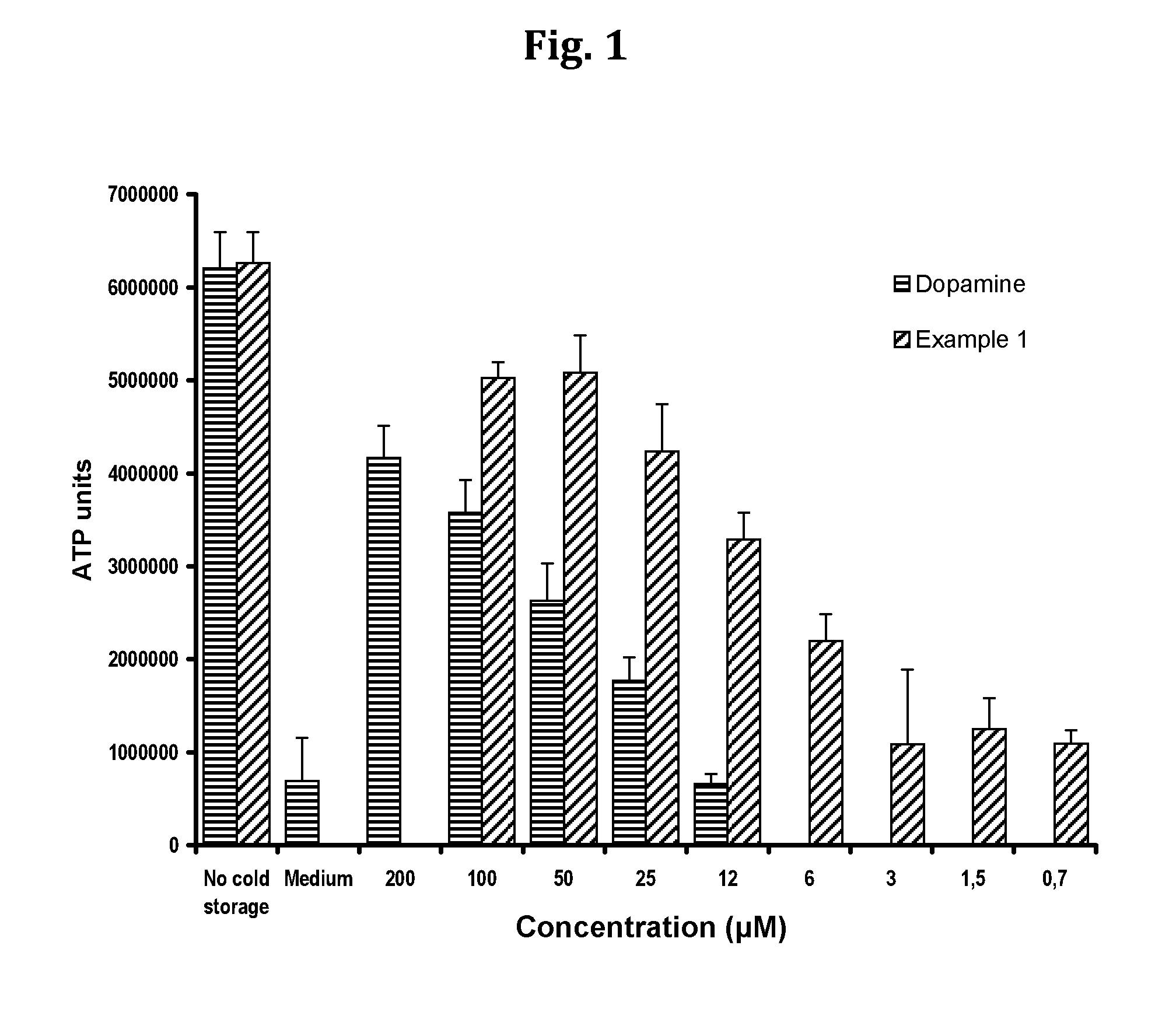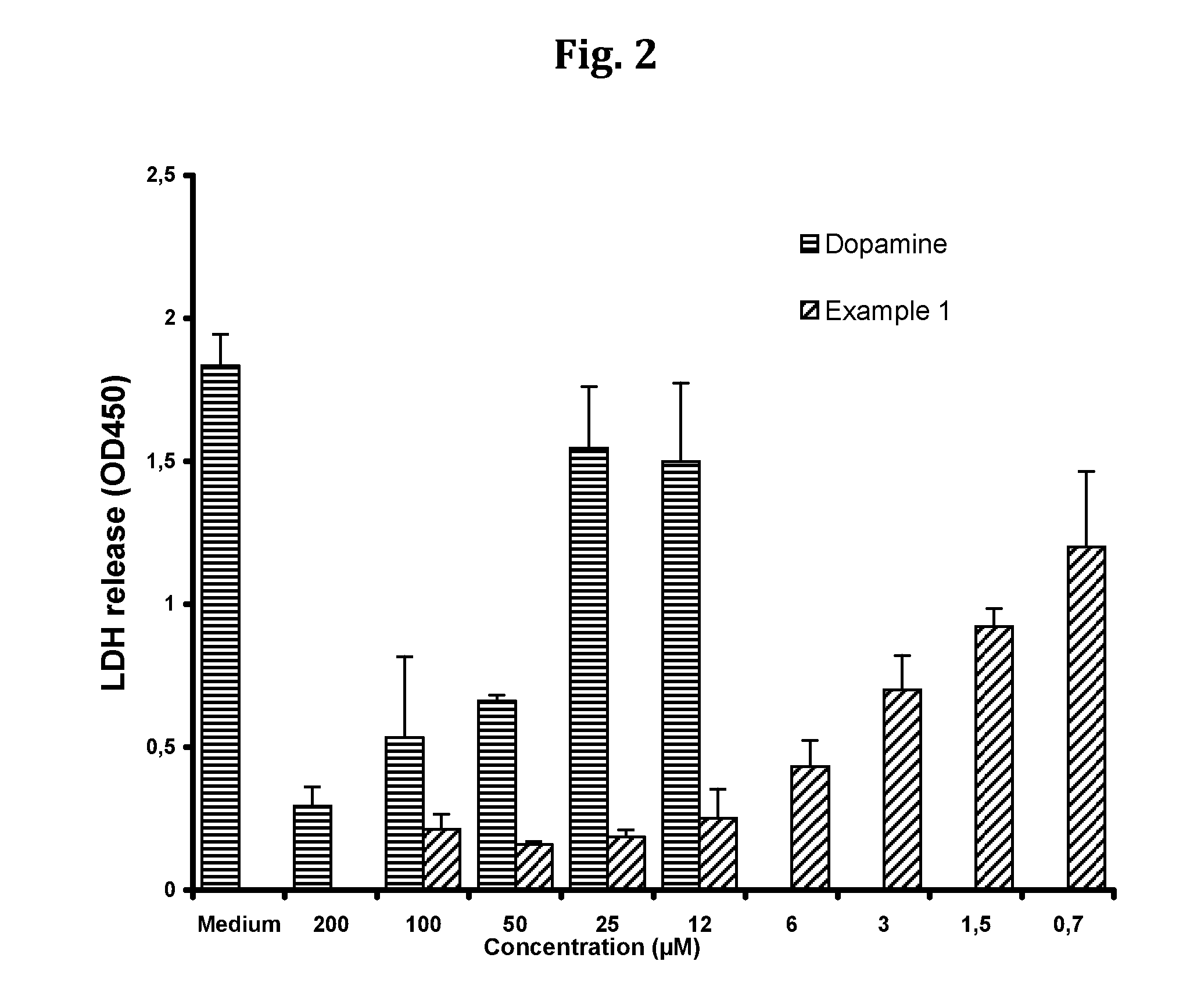Compositions and methods for improved organ transplant preservation and acceptance
a technology for organ transplants and compositions, applied in the field of organ transplantation, can solve the problems of reducing the long-term survival of brain dead donors, unable to achieve long-term survival, so as to achieve the effect of reducing the injury of cold preservation
- Summary
- Abstract
- Description
- Claims
- Application Information
AI Technical Summary
Benefits of technology
Problems solved by technology
Method used
Image
Examples
example 1
[0067]A solubilised formulation of N-octanoyl dopamine was formulated with polysorbate 80 (Tween 80) as amphiphilic excipient. In short, N-octanoyl dopamine and polysorbate 80 were added to isotonic (0.9 wt.-%) sodium chloride solution such as to obtain an N-octanoyl dopamine concentration of 1.116 mg / mL (4 μmol / mL) and a polysorbate concentration of 5 mg / mL. The pH was adjusted to pH 6.5. The mixture was filled into vials, closed with a rubber stopper and aluminium cap, and autoclaved for 10 minutes at 121° C. and subsequently agitated during cooling. A colourless, clear or slightly opalescent solution was obtained. The solution was physically and chemically stable at room temperature for at least 4 weeks.
example 2
[0068]In analogy to example 1, a solubilised formulation of N-octanoyl dopamine was formulated with poloxamer 407 (Pluronic 127) as amphiphilic excipient. The same amounts and procedures were used. Again a stable and only slightly opalescent liquid was obtained.
example 3
[0069]Example 1 was repeated, except that the amount of N-octanoyl dopamine and of the polysorbate were increased by the factor of 10 (to 11.16 mg / mL and 50 mg / mL, respectively). Again, a colourless, clear or slightly opalescent and stable solution was obtained, demonstrating that surprisingly small concentrations of the polysorbate are capable of solubilising therapeutically relevant amounts of N-octanoyl dopamine.
PUM
| Property | Measurement | Unit |
|---|---|---|
| diameter | aaaaa | aaaaa |
| diameter | aaaaa | aaaaa |
| pH | aaaaa | aaaaa |
Abstract
Description
Claims
Application Information
 Login to View More
Login to View More - R&D
- Intellectual Property
- Life Sciences
- Materials
- Tech Scout
- Unparalleled Data Quality
- Higher Quality Content
- 60% Fewer Hallucinations
Browse by: Latest US Patents, China's latest patents, Technical Efficacy Thesaurus, Application Domain, Technology Topic, Popular Technical Reports.
© 2025 PatSnap. All rights reserved.Legal|Privacy policy|Modern Slavery Act Transparency Statement|Sitemap|About US| Contact US: help@patsnap.com



